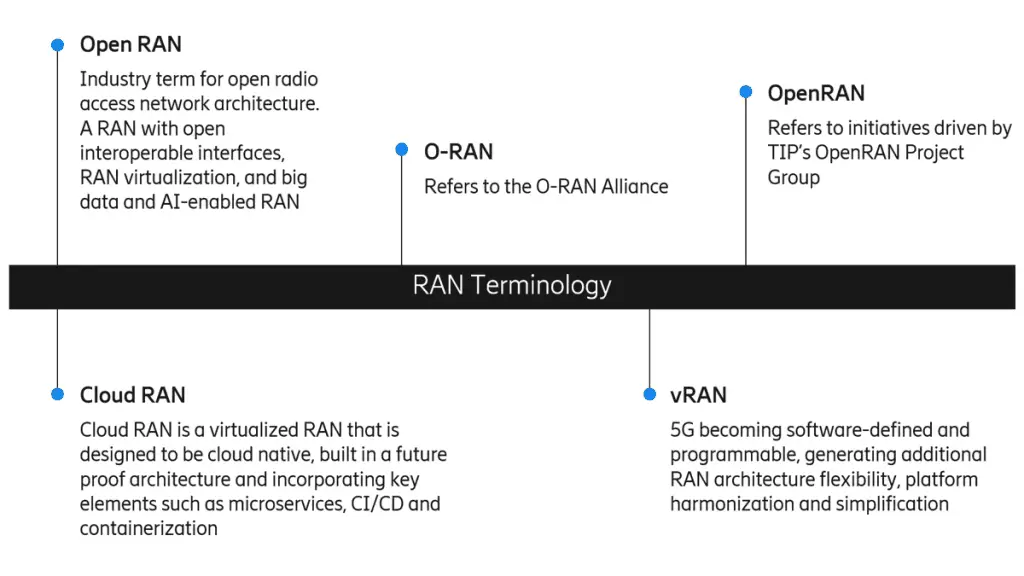Open RAN TL;DR Takeaway:
- Open RAN (O-RAN) revolutionizes the mobile network with separated hardware and software components.
- Benefits include increased competition, lower costs, improved network performance, and customer choice.
- Challenges involve widespread adoption, system integration, tech support, and security risks.
- Open RAN enables supply chain diversity, flexibility in equipment selection, and integration with third-party products.
Open RAN (O-RAN) emerges as a game-changing technology that aims to redefine the Radio Access Network (RAN).
By separating hardware and software components, O-RAN introduces open interfaces and virtualization, paving the way for supply chain diversity, increased competition, and enhanced innovation.
In this article, we will delve into the world of Open RAN, exploring its applications, challenges, and the myriad benefits it offers to the mobile network industry.
What is Open RAN (O-RAN) Used For?
Open RAN serves as the critical technology that enables seamless connectivity between users and the mobile network through radio waves.
Traditionally, RAN technology was delivered as an integrated hardware and software platform.
However, O-RAN takes a revolutionary approach by disaggregating these components, allowing for greater flexibility and scalability.
With its open interfaces and virtualization capabilities, it empowers network operators to select the best-fit equipment and software that align with their specific requirements.
This flexibility translates into a diversified supply chain, enabling operators to explore solutions from multiple vendors.
Additionally, it provides the foundation for the integration of artificial intelligence (AI) and machine learning (ML) technologies, bringing forth advanced network management and orchestration capabilities.

Are There Challenges for Open RAN (O-RAN)?
While it holds immense potential, it also faces several challenges on its path to widespread adoption.
One significant challenge lies in garnering support from major industry players.
Only a handful of operators have embraced O-RAN standards, with Rakuten’s 4G LTE network in Japan being a notable pioneer. However, initiatives like Dish Network’s entry into the mobile network arena with a commitment signify a growing interest in this transformative technology.
A multi-vendor RAN model, a key aspect of O-RAN, presents its own set of challenges.
The complexity of integrating and managing diverse components from different vendors can pose difficulties in issue identification and isolation. The role of system integrators becomes vital in ensuring seamless collaboration and functionality across the network.
To address these challenges, organizations working on these standards have established testing methodologies, testing centers, and collaborative working groups to facilitate ongoing research and development.
Security is another critical concern while implementing. As more vendors are brought into the RAN ecosystem through open interfaces, the threat surface area increases. Vendors need to prioritize security best practices, and customers must conduct due diligence to ensure vendors’ compliance.
The O-RAN Alliance has recognized this issue and established a Security Task Force, working toward defining security architectures, frameworks, and guidelines within these RAN standards.
What Are The Benefits of Open RAN (O-RAN) & Why Is It Better?
Open RAN brings a host of benefits that have the potential to transform the mobile network landscape. Firstly, it promotes market competition and customer choice by breaking down the barriers of vendor lock-in.
With open interoperability standards, new vendors can enter the market, driving innovation and fostering healthy competition.
Lower equipment costs are another advantage. By introducing open interfaces, third-party products can seamlessly integrate with the RAN infrastructure, enabling network operators to opt for less expensive alternatives.
This shift from proprietary equipment to generic hardware reduces costs and enhances affordability.
Furthermore, offers improved network performance. With the integration of AI and ML technologies, network administrators can automate network functions, leading to more efficient traffic management and adaptability.
Automated deployments save time and resources while reducing human intervention.
Conclusion
Open RAN (O-RAN) emerges as a transformative technology in mobile networks. By enabling the separation of hardware and software components, it fosters supply chain diversity, solution flexibility, and increased competition.
While facing the challenges of adoption and integration, it holds the promise of lower costs, improved network performance, and a vibrant ecosystem of vendors.
As the industry continues to embrace O-RAN standards, we can expect a paradigm shift in how mobile networks are designed, operated, and experienced by users worldwide.

